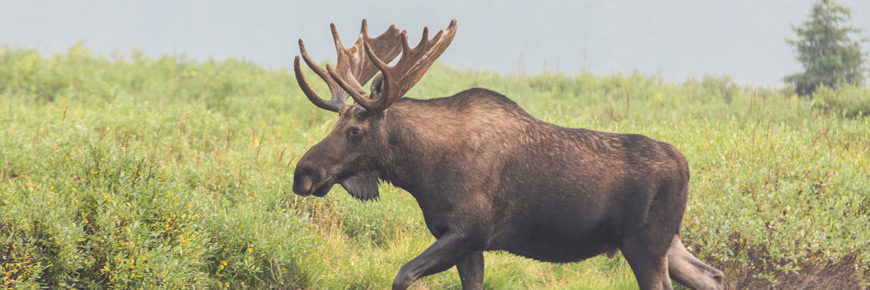
Moose
Kouchibouguac National Park
Moose may look tame, but they are not. They have been known to charge people and vehicles and can attack with their hooves.
- Cow moose are most dangerous during calving season (mid-May to the end of June)
- Bull moose can be more aggressive during mating season (mid-September to the end of December)
- In late winter, moose may be reluctant to leave the road or trail and may defend their space aggressively
Watch for moose while driving
Moose commonly run across the road - and sometimes stand in the middle of it. They can be very hard to see, especially at dusk or if they are not facing you. Avoid a collision: scan the roadside for wildlife, drive within the posted speed limit, and avoid driving after dusk.
Stay at least 3 bus lengths away (30 m / 100 ft), whether driving or on foot. On the trail, wait for the moose to leave, take a wider detour if necessary and always keep a tree or other large obstacle between you and the moose.
Moose encouters
Signs of an aggressive moose
- Ears pinned back
- Hair on neck raised
- Mouth smacking and licking
- Foot stomping
- Swaying head
- Short charges
If a moose charges
- Find protection and get behind it
- Trees or large rocks can serve as a barrier
- If you get knocked down by a moose, curl up into a ball and protect your head and neck
- Report encounters with agitated or aggressive moose immediately to Parks Canada staff or call 1‑877‑852‑3100
Related links
- Date modified :